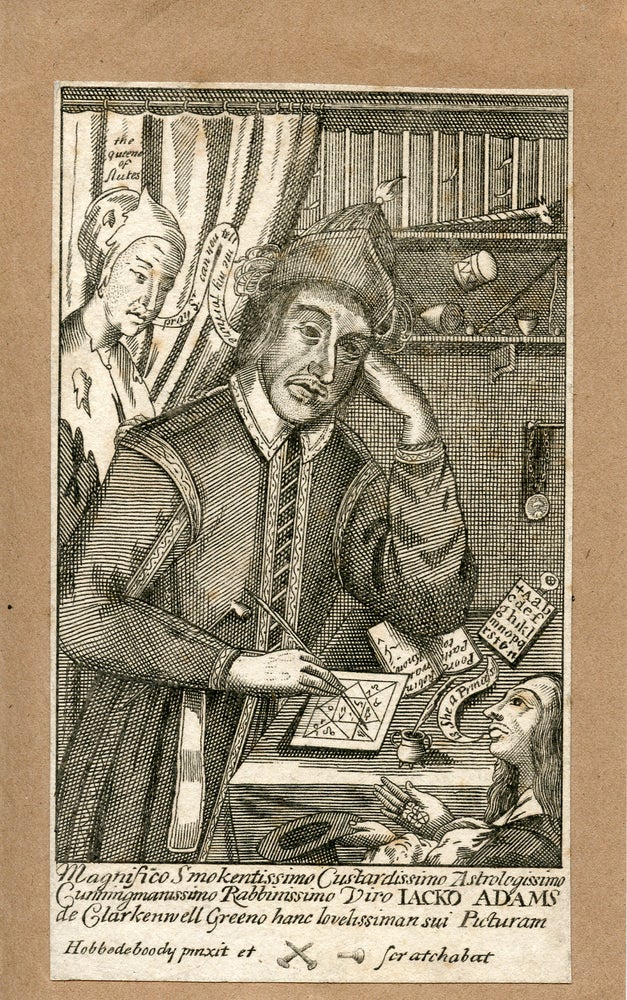
Engraved Portrait by "Hobbedeboody".
Publisher Information: 1663.
Adams, Jack (1625-?). Magnifico smokentissimo custardissimo astrologissimo cunningmanissimo rabbinissimo viro Iacko Adams de Clarkenwell Greeno hanc lovelissiman sui picturam. Engraved portrait. N.p., n.d. (1663 or later). Mounted. 130 x 76 mm. (engraving); 146 x 93 mm. (mount). Very good.
Comic portrait of British astrologer Jack Adams, the "Cunning Man of Clerkenwell Green," captioned in dog-Latin and signed "Hobbedeboody pinxit et scratchabat." John Timbs, who reproduced this engraving in his English Eccentrics and Eccentricities (1875), gave the following brief biography of Adams:
"Among the celebrities of Clerkenwell Green was Jack Adams, whose nativity was calculated by Partridge, who affirmed that he was born on the 3rd of December, 1625, and that he was so great a natural, or simpleton, as to be obliged to wear long coats, besides other marks of stupidity. . . .
"Jack Adams was a conjurer and professor of the celestial sciences; he was (says Granger's Supplement) 'a blind buzzard, who pretended to have the eyes of an eagle. He was chiefly employed in horary questions, relative to love and marriage, and knew, upon proper occasions, how to soothe and flatter the expectations of those who consulted him, as a man might have much better fortune from him for five guineas than for the same number of shillings . . . He assumed the character of a learned and cunning man; but was no otherwise cunning than as he knew how to overreach those credulous mortals who were as willing to be cheated as he was to cheat them, and who relied implicitly upon his art.' . . .
"In an old print we have Jack Adams in a fantastic dress, with a tobacco-pipe in his girdle, standing at a table on which lies a horn-book and Poor Robin's Almanack. On one shelf is a row of books, and on another several boys' playthings, particularly tops, marbles, and a small drum. Before him is a man genteelly dressed, presenting five pieces; from his mouth proceeds a label, inscribed, 'Is she a princess?' This is meant for Carleton, who married the pretended German princess. Behind him is a ragged, slatternly woman, who also has a label in her mouth, with these words: 'Sir, can you tell my fortune?'" (Timbs, pp. 131-132).
"The pretended German princess" refers to British criminal Mary Carleton, who assumed false identities in order to marry and defraud a number of men. She first came to public notice in 1663 when she was arrested and tried for impersonating a German princess in order to marry John Carleton, the brother-in-law of a tavern owner.
Book Id: 41189Price: $500.00
